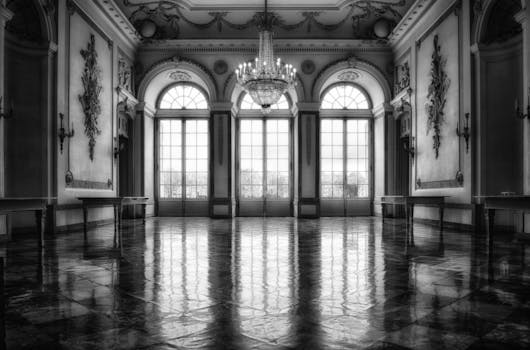Baroque Architecture: Opulence and Drama in the Style of the 17th Century
Baroque architecture emerged in the late 16th century and flourished throughout the 17th and early 18th centuries, primarily in Europe. Characterized by grandeur, drama, and a sense of movement, this architectural style was a response to the Renaissance’s emphasis on symmetry and proportion. Baroque architecture sought to evoke emotional responses through its elaborate designs, intricate details, and the use of light and shadow. This article delves into the defining features, historical context, and notable examples of Baroque architecture, illustrating its lasting impact on the architectural landscape.
The Historical Context of Baroque Architecture
The Baroque period coincided with significant social, political, and religious changes in Europe. The Catholic Church, in particular, played a crucial role in the development of Baroque architecture as a means to convey its power and influence during the Counter-Reformation. The style was intended to inspire awe and devotion among the faithful, contrasting sharply with the more restrained aesthetics of the Protestant Reformation.
Key factors that contributed to the rise of Baroque architecture include:
- The Counter-Reformation: The Catholic Church sought to reassert its authority and attract followers through grandiose structures.
- Royal Patronage: Monarchs and aristocrats commissioned elaborate buildings to showcase their wealth and power.
- Scientific Advancements: Innovations in engineering and materials allowed for more ambitious designs, including domes and expansive interiors.
Defining Features of Baroque Architecture
Baroque architecture is characterized by several distinctive features that set it apart from its predecessors. These elements work together to create a sense of movement and drama within the structures.
- Curvilinear Forms: Unlike the straight lines of Renaissance architecture, Baroque buildings often feature curves and undulating surfaces, creating a dynamic visual effect.
- Ornamentation: Richly decorated facades, intricate sculptures, and elaborate frescoes are hallmarks of Baroque design, emphasizing opulence.
- Light and Shadow: The strategic use of light, often through large windows and skylights, enhances the dramatic effect of the architecture.
- Spatial Dynamics: Baroque architects designed spaces that encouraged movement, often leading visitors through a series of grand rooms and corridors.
Notable Examples of Baroque Architecture
Several iconic structures exemplify the grandeur and drama of Baroque architecture. These buildings not only showcase the style’s defining features but also reflect the cultural and historical contexts in which they were built.
- St. Peter’s Basilica, Vatican City: Designed by architects such as Michelangelo and Bernini, this monumental church features a grand dome and an opulent interior adorned with marble and gold.
- Palace of Versailles, France: Commissioned by Louis XIV, this royal residence is renowned for its lavish gardens, intricate interiors, and the Hall of Mirrors, which exemplifies Baroque opulence.
- Church of San Carlo alle Quattro Fontane, Italy: Designed by Francesco Borromini, this church is celebrated for its innovative use of space and light, with a striking oval plan and dynamic facade.
- Schönbrunn Palace, Austria: A former imperial summer residence, this palace features stunning Baroque gardens and a grand architecture that reflects the power of the Habsburg dynasty.
The Legacy of Baroque Architecture
The influence of Baroque architecture extends far beyond the 17th century. Its dramatic style and emphasis on grandeur can be seen in various architectural movements that followed, including Rococo and Neoclassicism. Additionally, Baroque principles have been adapted in modern architecture, where the interplay of light, space, and ornamentation continues to inspire contemporary designers.
Statistics indicate that Baroque architecture remains a significant tourist attraction, with millions visiting iconic sites each year. For instance, St. Peter’s Basilica alone draws over 4 million visitors annually, highlighting the enduring appeal of this architectural style.
Conclusion
Baroque architecture stands as a testament to the artistic and cultural dynamism of the 17th century. Its opulence and dramatic flair not only reflect the historical context of its time but also continue to captivate audiences today. Through its defining features, notable examples, and lasting legacy, Baroque architecture invites us to appreciate the beauty and complexity of a style that sought to inspire awe and evoke emotion. As we explore these magnificent structures, we gain insight into the values and aspirations of a bygone era, reminding us of the power of architecture to shape our experiences and perceptions.
